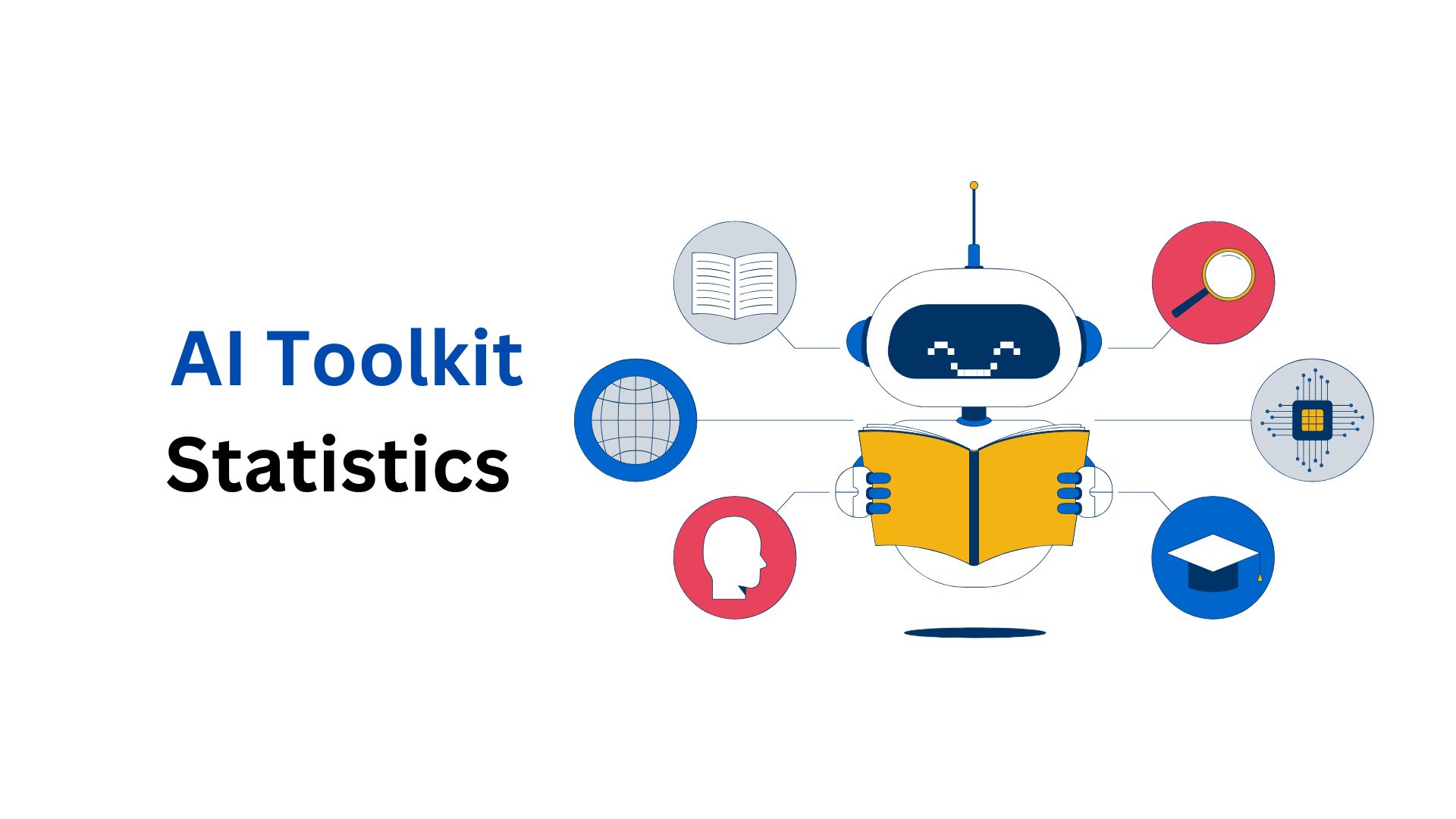Coursera Statistics By Trends And Facts (2025)
Updated · Jul 02, 2025
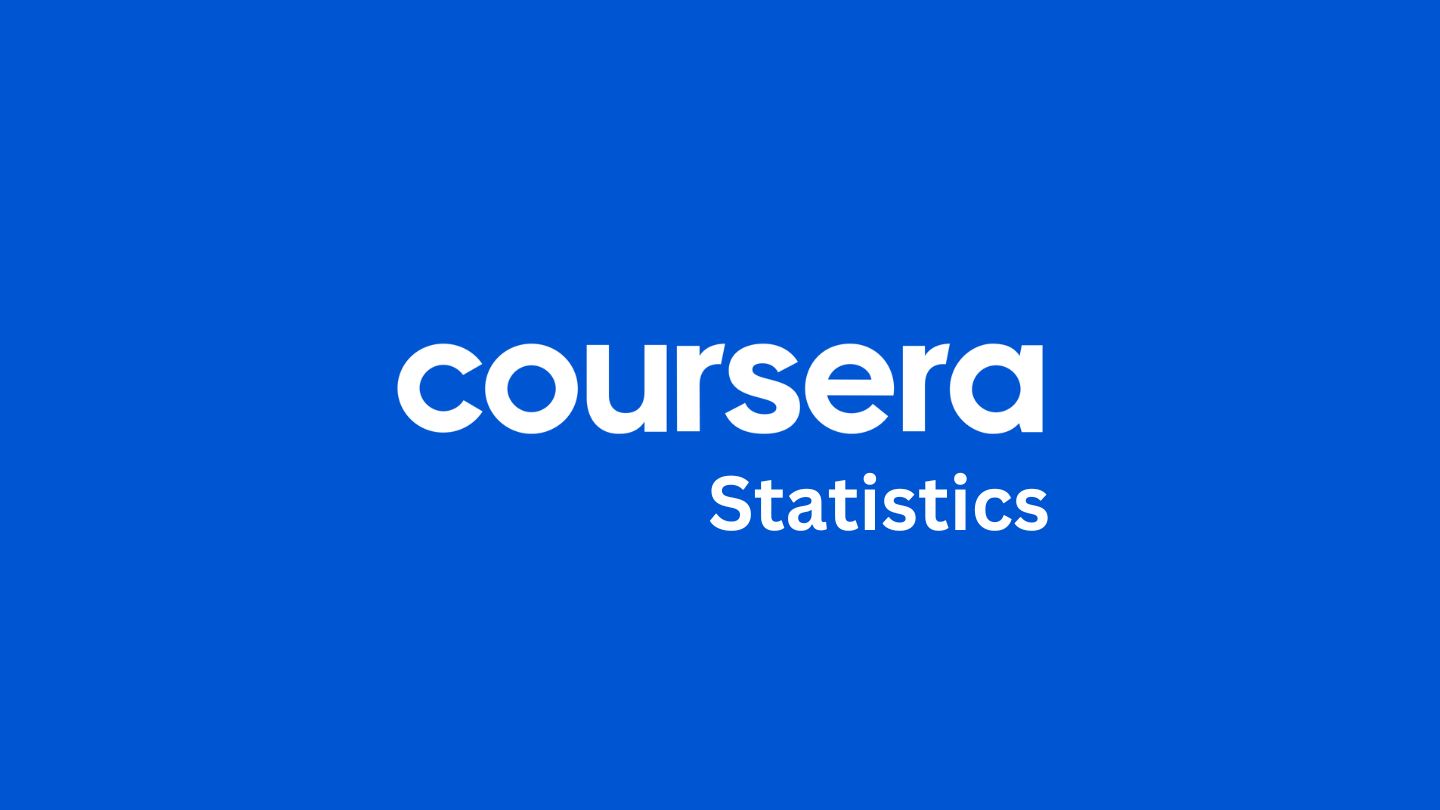
Table of Contents
Introduction
Coursera Statistics: In 2024, Coursera has already established itself as a global powerhouse in online education, bringing the full gamut of courses and programs to a diverse array of learners. It has facilitated access to a growing and ever-expanding catalog of content while adopting the impactful and upcoming technologies such as generative AI.
The company has also recorded considerable spikes in practically every metric. This study delves deeply into the workings of Coursera statistics, understanding the financial successes and trends that shaped the platform’s future.
Editor’s Choice
- Coursera statistics depict that the company’s revenue for 2024 was US$ 694.7 million, reflecting a rise of 9% over the preceding year.
- Consumer remained the powerful segment, with revenue amounting to US$ 398.1 million, Enterprise at US$ 238.9 million, and Degrees at US$ 57.7 million.
- Cash and equivalents increased to US$ 726.1 million through 2024, an increase of 10.6%.
- Accounts receivable decreased by an 11.5% margin, reflecting better credit and payment management.
- A slight increase in total assets was recorded, amounting to US$ 930.3 million, thus indicating stable growth.
- Gross profit in 2024 increased by 13% to US$ 371.4 million, reflected in an overall greater gross margin of 53%.
- Cost of revenue rose by 6% due to increases in educator fees and platform expenses.
- Increased consumer gross margin at 54%, maintained enterprise gross margin at 69%, and inexed for degrees at 100%.
- Degree enrollments reached a total of 22025 in 2023; however, revenue gained was a modest increase of 8.9%, indicative of some challenges in monetisation.
- By the end of 2024, the number of registered learners had soared to 168.2 million, 19% more than in 2023.
- New enrollments in 2024 were 26.3 million, continuing the five-year upward trend.
- 26,700 students were enrolled for degrees in Q4 2024, compared with the previous year’s figure, yielding a 22% rise from last year.
- The highest spike in degree enrolment took place in Q3 2024, with a year-on-year increase of 29%.
- Information on learners’ behaviours includes 49.5 million course enrollments, 585.2 million video views, and 98.2 million assessments conducted in 2024.
- North America is Coursera’s largest market with 31.2 million learners.
- Women comprise 46% of Coursera learners globally, rising from 43% in 2022.
- Mexico and Colombia have achieved gender parity, while gender gaps remain a concern for MENA and Sub-Saharan Africa.
Coursera Revenue

(Reference: missiongraduatenm.org)
- In 2024, Coursera statistics reveal that the company had total revenue of US$ 694.7 million, which was 9% higher than the previous year’s revenue of US$ 635.8 million.
- The growth came from all three primary segments of the business.
- The largest contributor continued to be Consumer, which generated US$ 398.1 million, a gain of US$ 32.9 million or 9% from the previous year’s US$ 365.2 million.
- Enterprise revenue increased from US$ 219.5 million for the whole of 2023 to US$ 238.9 million in 2024, an absolute increase of US$ 19.3 million, also corresponding to 9% growth.
- The Degrees segment, although much smaller in total income, achieved the highest percentage growth of the three; according to Coursera statistics, it rose 13% from US$ 51 million to US$ 57.7 million increase of US$ 6.7 million.
- On the whole, this steady growth across all areas reflects Coursera’s balanced strategy and continued demand across different customer types.
Coursera’s Financial Health And Growth Trends
- Coursera was also much more financially stable and operationally efficient across several key indicators in 2024.
- Cash and cash equivalents increased by US$ 69.8 million to US$ 726.1 million, representing a 10.6% increase from the US$ 656.3 million recorded in 2023.
- Coursera statistics indicate an improvement in liquidity and stronger cash positions, both important for operational flexibility and for funding future growth.
- Simultaneously, accounts receivable fell by 11.5% or US$ 7.7 million from US$ 67.4 million to US$ 59.7 million, indicating better credit control, quicker payments from customers, or a reduced need for credit sales.
- Total assets, meanwhile, recorded a modest increase of US$ 9.7 million, or 1.1%, from US$ 920.5 million in 2023 to US$ 930.3 million in 2024. This typifies Coursera’s steady business growth and sound asset management.
- Revenues earned by Coursera increased from US$ 58.9 million, a 9.3% year-on-year growth, from 2023 to 2024.
- Compared to 2022, Coursera statistics show that the revenue surged by US$ 170.9 million, marking an impressive growth of 32.6% over 2 years.
- The consistent upward trend in revenue reflects the increasing market demand for Coursera’s services and the successful execution of its strategies.
Coursera Profit Statistics
| Cost of Revenue & Gross Margin (in thousands) | 2024 | 2023 | Change ($) |
Change (%)
|
| Cost of Revenue | $323,261 | $305,993 | $17,268 | 6% |
| Gross Profit | $371,413 | $329,771 | $41,642 | 13% |
| Gross Margin | 53% | 52% | – | – |
(Source: missiongraduatenm.org)
- Coursera made its strides in profitability in 2025 through major segments. Coursera statistics demonstrate that the overall gross profit of the company grew by 13%, rising from US$ 329.8 million in 2023 to US$ 371.4 million in 2024.
- The gross margin, therefore, stood at 53%, as against 52% in the previous year. The gross margin of the Consumer segment also made a small increase, reaching 54% from 53%, thereby indicating some better efficiency or pricing strategies in that area.
- However, the revenue cost also increased by 6%, from US$ 306 million to US$ 323.3 million. This was mainly driven by higher educator partner fees to the extent of US$ 17.4 million and platform cost increases of US$ 1.7 million.
- However, Coursera managed to realise some savings on costs, particularly US$ 3.8 million on lower translation spending and US$ 1.3 million on support service costs.
- In the margins specific to the segments, the enterprise segment kept performing strongly with a gross margin rise from 68% to 69%.
- Meanwhile, the degree segment has continued to maintain a perfect gross margin of 100% with regard to consistent efficiency in that area.
- These developments indicate that Coursera is not only ramping up revenue but is also counteracting its cost implications to gain overall profitability.
Coursera Degree Students
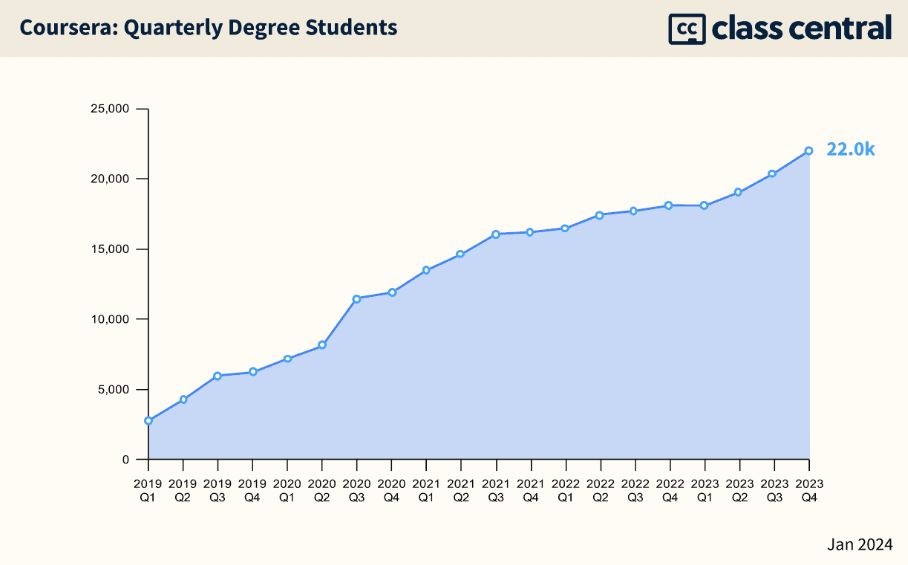
(Source: classcentral.com)
- In 2023, enrollments in Coursera’s degree programs increased and reached 22,025 students. But the revenue growth from degree programs for the year only amounted to 8.9%.
- Coursera statistics show that it has comparatively slower revenue growth relative to sudden rises in enrollment, indicating that monetisation of these programs remains a challenge for Coursera.
- It may hint at lower average revenue per student, potential pricing pressure, or a slower marketing process for high-priced degree options.
- All in all, while there exists increasing demand for online degrees, translating that demand into meaningful revenue is still in the works.
Coursera New Registered Learners
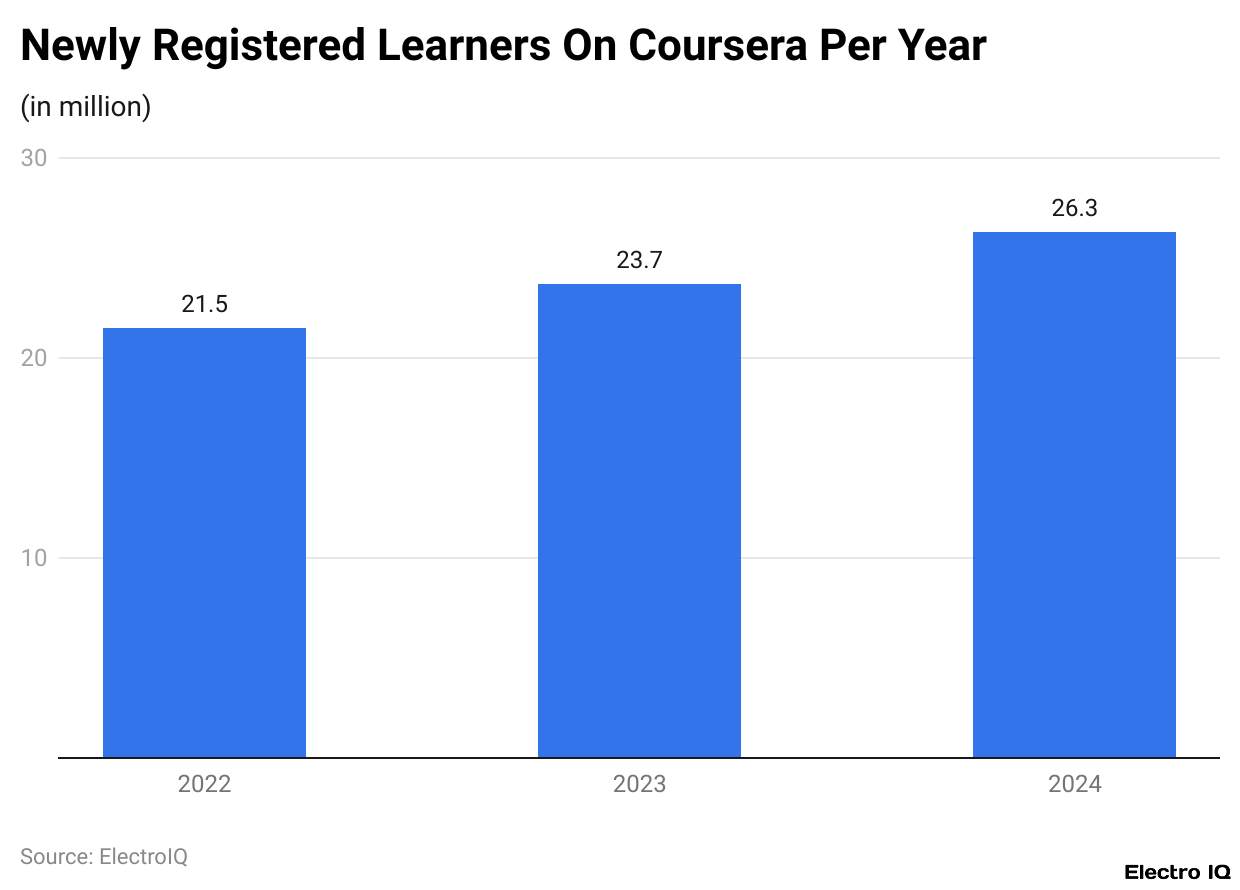
(Reference: missiongraduatenm.org)
- By the end of 2024, it had been reported that Coursera had 168.2 million registered learners, which is a 19% growth over 141.9 million in 2023.
- According to Coursera statistics, 26.3 million newly registered learners were added to the list, which had been 23.7 million in 2023 and 21.5 million in 2022, indicating a consistent upward trend in user growth.
- There were also record-high numbers of students enrolled in degrees, with 26,700 participating programs in Q4 2024, a year-over-year growth of 22%.
- The largest increase in degree enrollment came in Q3 2024, when the number of enrolled students grew from 20,400 to 26,400, representing a 29% increase from Q3 2023. Learner activity on the platform remained robust for the entire year in 2024.
- Users of Coursera completed 49.5 million course enrollments, a rise of 9-10% from the year prior. Furthermore, learners watched 585.2 million lecture videos and completed 98.2 million assessments, which is an indication of mammoth engagement across the board.
- As for profitability, Coursera has operationally streamlined some of its key segments. The gross margin of the consumer segment slightly increased from 53% to 54%, whereas the gross margin of the enterprise segment improved from 68% to 69%.
- The degree segment gross margin was flat at 100%, indicating very strong cost control efforts in that segment. These improvements go a long way towards strengthening the position of Coursera from a financial perspective in 2025.
Coursera Demographics By Region
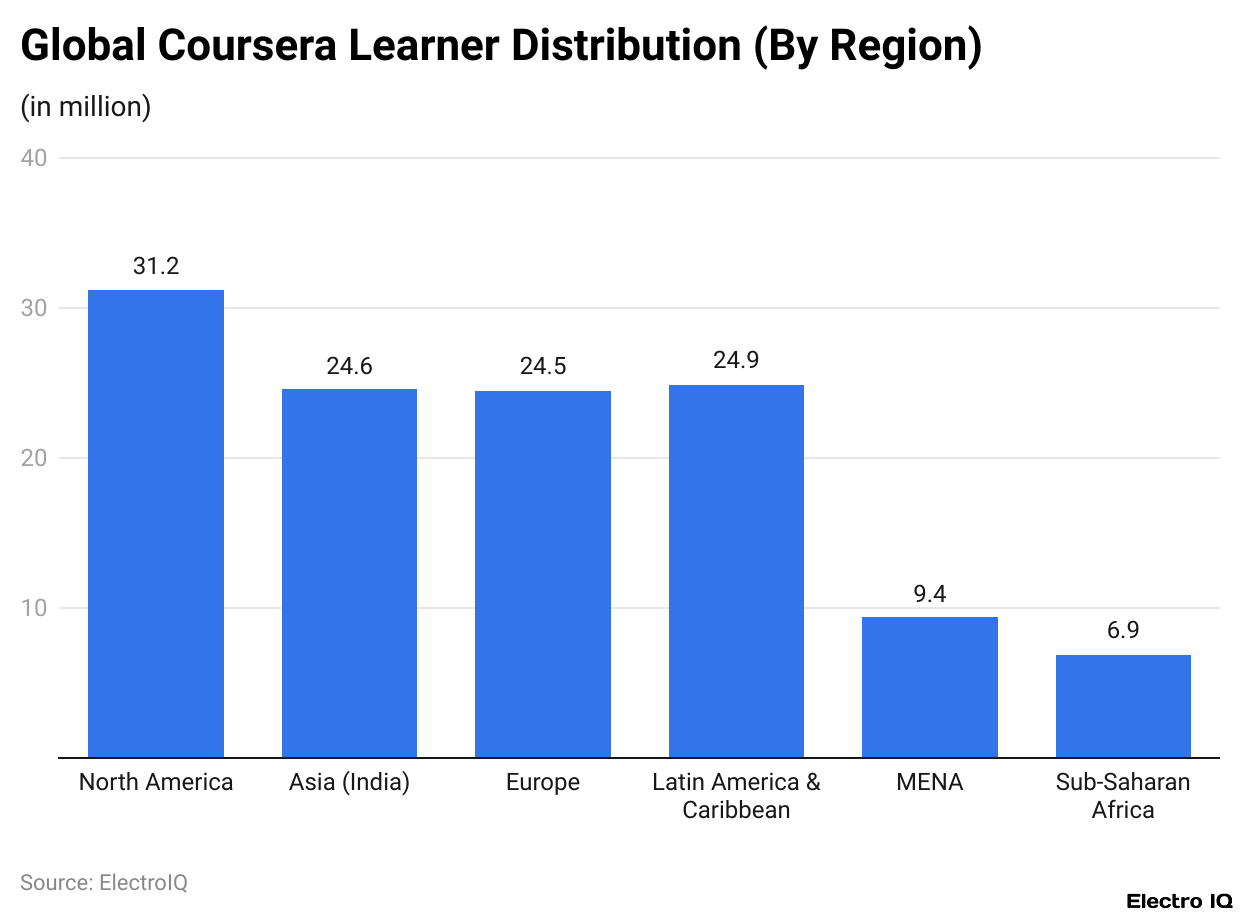
(Reference: missiongraduatenm.org)
- In 2025, Coursera had its largest regional learner base, and Coursera statistics reveal that it is primarily located in North America, with some 31.2 million learners.
- Women constitute 46% of the total Coursera users across the globe, an increase from 43% in 2022, indicating steady movement toward gender balance in online education.
- Gender parity is even achieved in some countries, with women representing 51% of learners in Mexico and 50% in Colombia.
- However, in some regions, women’s access to online learning is still plagued by gender disparities. The MENA region has a 13-percentage-point gap between male and female learners, while Sub-Saharan Africa has a 14-point gap.
- Such disparities are further exacerbated by existing socioeconomic limitations and poor digital infrastructure.
- An exceptional case is represented by Uzbekistan, where 6.25% of the labour force is reportedly using Coursera, indicating high national involvement in online education as a means of workforce development and upskilling.
Global Learning Trends On Coursera In 2025
- In 2025, the global learner population on Coursera is both rich and diverse across regionally varying metrics, such as learner age, gender participation, STEM involvement, and mobile learning usage. North America remains the largest region for Coursera, with 31.2 million learners.
- The United States is leading within the region with 27.7 million learners, followed by Canada with 4 million.
- Females comprise 52% of learners in North America, with 38% of them in STEM. Acceptance of mobile learning is moderate, as 40% accessed their courses via mobile devices. India boasts the highest number of learners in the world at 24.6 million people.
- However, only 39% of those learners are women, while 33% are involved in STEM. India, however, leads the world in mobile-based learning, as 53% learn through their smartphones.
- Indonesia has the youngest median learner age at 29 years and shows promising female participation (46%) and mobile usage (46%).
- The Philippines stands out as having the highest proportion of female learners in Asia at 51%, while Malaysia leads in women’s participation in STEM at 34%.
- In Europe, Coursera statistics indicate that the platform caters to 24.5 million learners with a median age of 35, exhibiting a blend of young professionals and adult learners.
- Women make up 46% of learners across Europe, with 34% participating in STEM. Mobile learning is present, albeit somewhat less prominent than in others, averaging 38%.
- The United Kingdom leads in learner numbers (3.8 million) and has great gender and STEM representation, with 48% of women and 35% of those women in STEM.
- Latin America and the Caribbean are rapidly framing online learning, accumulating 24.9 million learners with very high rates of mobile learning (46%).
- Within the region, this topic was surveyed by high female participation rates, with 49% of women and 46% in STEM-enrolled courses.
- Gender parity has been achieved in Mexico and Colombia, scoring 51% and 50% female participation, respectively. AI-related learning has increased dramatically, with 882% growth in course enrollments for Generative AI across the region.
- The Middle East and North Africa house around 9.4 million learners on Coursera. Although this is a rapidly developing region, it holds evident differences between the genders: only 35% of the learners are women, and 27% of them participate in STEM.
- Egypt is the most important market in the region, with 2.9 million learners, and also leads in mobile access learning, with 64% of users taking courses on mobile devices.
- MENA is also moving quite strongly, with a 9% increase in enterprise enrollments. Sub-Saharan Africa has 6.9 million learners and has the highest mobile learning adoption at 65%, as well as a younger population.
- Nevertheless, gender gaps still exist, as only 36% are women learners, and 27% are involved in STEM. Nigeria leads in having 2.4 million learners, while being the highest in mobile learning rate at 76%.
- South Africa is next, with 1.3 million learners, and better gender representation-46% women and 36% of those women active in STEM.
Conclusion
In its performance for 2024, Coursera has made significant strides towards content expansion, technological innovation, and increased engagement of global learners. According to Coursera statistics, matching significant growth in revenue, an increase in learners, and growth of course offerings, Coursera continues to contribute greatly to the making of future online education.
With the escalation in demand for digital and AI-related skills, Coursera is strategically poised to offer a global solution and continually serve changing learner needs worldwide.
Sources
FAQ.
During the 2024 fiscal year, Coursera was able to reach a total revenue of US$694.7 million, an increase of 9% from the total revenue in 2023. Out of this total, the Consumer segment accounted for most of the segment’s contributions to the revenue, as it received approximately US$398.1 million for itself. This was followed closely by Enterprise, which generated US$238.9 million, then Degree program revenue generation worth US$57.7 million.
By the end of the year 2024, Coursera reached an extra 168.2 million registered learners, which increased its registered users from the previous figure of 141.9 million in 2023 by nearly 19%. Just 26.3 million new additions were registered in 2024 alone, meaning that there continue to be upward-growing statistics of users over the years.
In 2024, the gross margin for Coursera stood at 53% and recorded an increase of 13% to US$371.4 million in gross profit. Cash and cash equivalents increased by 10.6% to US$726.1 million, while accounts receivable reduced by 11.5%. This signifies more efficiency and better management of payments.
North America has the highest number of learners on Coursera – 31.2 million, followed by India with 24.6 million learners, the highest in the world. Latin America and the Caribbean have promising rates of mobile learning and gender parity; countries such as Mexico and Colombia reach 50% female participation at the site.
While 46 % globally were women in Coursera in these years, they were only 43% of users in 2022. Some countries, such as Mexico, stand at 51% and others, such as Colombia, at 50% installed parity. However, the two remaining regions, MENA and Sub-Saharan Africa, still have larger gaps of 35-36% female learners and only 27% across STEM involvement.

Maitrayee Dey has a background in Electrical Engineering and has worked in various technical roles before transitioning to writing. Specializing in technology and Artificial Intelligence, she has served as an Academic Research Analyst and Freelance Writer, particularly focusing on education and healthcare in Australia. Maitrayee's lifelong passions for writing and painting led her to pursue a full-time writing career. She is also the creator of a cooking YouTube channel, where she shares her culinary adventures. At Smartphone Thoughts, Maitrayee brings her expertise in technology to provide in-depth smartphone reviews and app-related statistics, making complex topics easy to understand for all readers.

